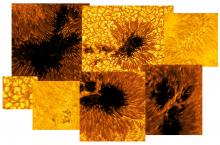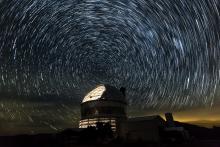Listen to today's episode of StarDate on the web the same day it airs in high-quality streaming audio without any extra ads or announcements. Choose a $8 one-month pass, or listen every day for a year for just $30.
You are here
Making Mirrors
The mirrors of most telescopes consist of a single big piece of glass — a reflective surface that gathers and focuses the light from distant objects. But there's a limit to how big you can make a single mirror. Bigger mirrors are made of smaller segments that are pieced together like the tiles on a floor.
A jumbo telescope that's under construction uses a slightly different approach. GMT — the Giant Magellan Telescope — will consist of seven mirrors. Each of them will be around the limit for individual mirrors — about 27 feet in diameter. When they're fitted together, they'll form a perfect figure for studying the stars — and span about 80 feet.
Making the mirrors is complicated. Each begins with tons of a special glass from Japan. The glass is shipped to a lab at the University of Arizona — the world's leading mirror maker.
The glass is placed in a giant oven and heated to about 2,000 degrees. The oven spins to evenly distribute the molten glass. A honeycomb structure on the back of the mirror leaves open spaces that greatly reduce its weight.
After the mirror cools, it's ground and polished. Its final surface must be shaped to within a few millionths of an inch. That shape is tested many times to make sure it's right.
Two of the mirrors are done. Three others are in various stages of preparation. And the final two will be cast in the next couple of years — finishing the eyes of the GMT.
More tomorrow.
Script by Damond Benningfield





